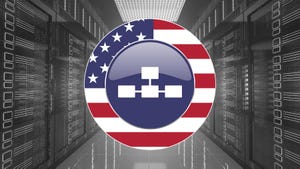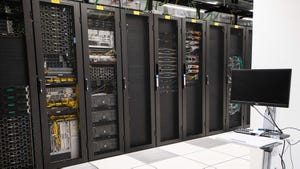Eco-Friendly Innovations: A Guide to Green Materials in Data CentersEco-Friendly Innovations: A Guide to Green Materials in Data Centers
Sustainable data centers start with green materials. Learn how choosing the right materials can reduce carbon impact and promote data center sustainability.

Choosing sustainable materials when building a data center is (literally, in part) the foundation for data center sustainability. Green materials won’t guarantee that your facility uses energy and water sustainably during day-to-day operations, but they will reduce the carbon impact of constructing the facility itself.
But which “green” materials are available when building a data center, and what should you consider when comparing different options for data center sustainability?
To answer those questions, here’s a guide to using green materials in data centers, based on different phases of data center construction.
Data Center Foundations: Choose Low-Carbon Concrete
The foundations of most data center constructions take the form of concrete slabs, which also serve as the ground floor of the facility.
Since concrete production accounts for as much as 9% of total global CO2 emissions, finding ways to reduce the carbon footprint of data center foundations is one important step toward sustainability.
Currently, there are no real alternatives to concrete as a building material for data center foundations in most cases, since other materials would be either too weak or exorbitantly expensive. But “low-carbon” concrete is an option that’s actively being explored by hyperscalers including Facebook and Microsoft.
Data Center Framing: Consider Recycled Steel or Plant-Based Designs
Larger data centers are typically framed using steel, whose span strength makes it ideal for constructing buildings with large open spaces – exactly the type of facility you’d want to host a server room.
But steel production also contributes significantly to carbon emissions, with about 8% of total global CO2 attributable to the steel industry.
One way to mitigate the sustainability impact of steel when building data centers is to choose recycled steel. Recycled steel isn’t carbon-free, since the recycling process is energy-intensive. But it’s more sustainable than manufacturing new steel from materials mined from the earth.
An alternative is to consider plant-based framing materials for data centers – an approach being explored by data center operators like Vertiv. Traditional wooden studs are one option, and engineered wood materials like glulam can help to build stronger or larger facilities.
Data Center Insulation: Use Recycled or Highly Efficient Materials
Insulation is another data center construction material where green options abound – such as insulation derived from plants like hemp, sheep’s wool, and recycled paper.
An important factor to keep in mind when insulating a data center, however, is the long-term sustainability of the facility will be shaped by how efficient the insulation is. Ideally, you’ll choose an insulation material that is sustainable itself, and that also delivers an excellent R-value and air infiltration mitigation.
In the long run, a less sustainable insulation material, like spray foam, may be desirable if it is more effective at reducing the energy consumption associated with ongoing data center operations.
Data Center Roofing: Balance Green Materials with Energy Efficiency
Along similar lines, when choosing data center roofing, you’ll want to consider not just how “green” the roofing material itself is, but also what its implications are for ongoing energy use.
For instance, while rubberized roofing is a relatively green material, it enhances sustainable operations when it’s tinted or painted white. White roofing reduces the energy absorbed from sunlight, which in turn decreases the amount of electricity consumed by HVAC systems that cool a data center.
Roofing design, too, can impact overall sustainability. For more details, check out our guide to data center roofs.
More Tips for Building a Green Data Center
Beyond choosing green materials for key data center building components, other tips for enhancing the sustainability of a new data center include:
Source materials locally where possible to reduce the carbon emissions triggered by transportation.
Choose an efficient floor design to optimize energy usage.
Design server rooms and rows in ways that contribute to efficient energy use.
Consider constructing a multi-story data center, which increases capacity relative to the size of foundations and roofs.
Consider converting an existing structure into a data center. In many cases, reusing an existing building is more sustainable than choosing the greenest materials for a new building.
About the Author
You May Also Like









